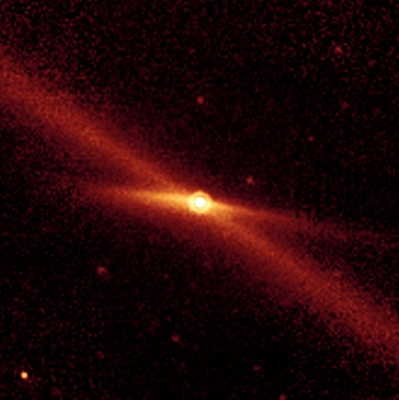
Comets go around the Sun in a highly elliptical orbit. They can spend hundreds and thousands of years out in the depths of the solar system before they return to Sun at their perihelion. Like all orbiting bodies, comets follow Kepler’s Laws – the closer they are to the Sun, the faster they move.
While a comet is at a great distance from the Sun, its exists as a dirty snowball several kilmoeters across. But as it comes closer to the Sun, the warming of its surface causes its materials to melt and vapourise producing the comet’s characteristic tail. Comet tails can be as long as the distance between the Earth and the Sun.
According to Kepler’s first law, all objects orbit the sun in elliptical paths. The orbits of the planets, except for Pluto, are almost circular, and so are those of asteroids and icy objects in the Kuiper belt, which is just beyond the orbit of Neptune. Comets that originate in the Kuiper belt are known as short period comets and tend to remain in the same narrow band as the planets.
Long period comets, which originate in the Oort cloud, which is beyond the Kuiper belt and on the outskirts of the solar system, are a different matter. Their orbits can be so elliptical that the comets can completely disappear for hundreds of years. Comets from beyond the Oort cloud can even have parabolic orbits, meaning they make a single appearance in the solar system and never come back again.
None of this behavior is mysterious once you understand how planets and comets came to be there in the first place. It all has to do with the birth of the sun.
Credit : Sciencing
Picture Credit : Google




